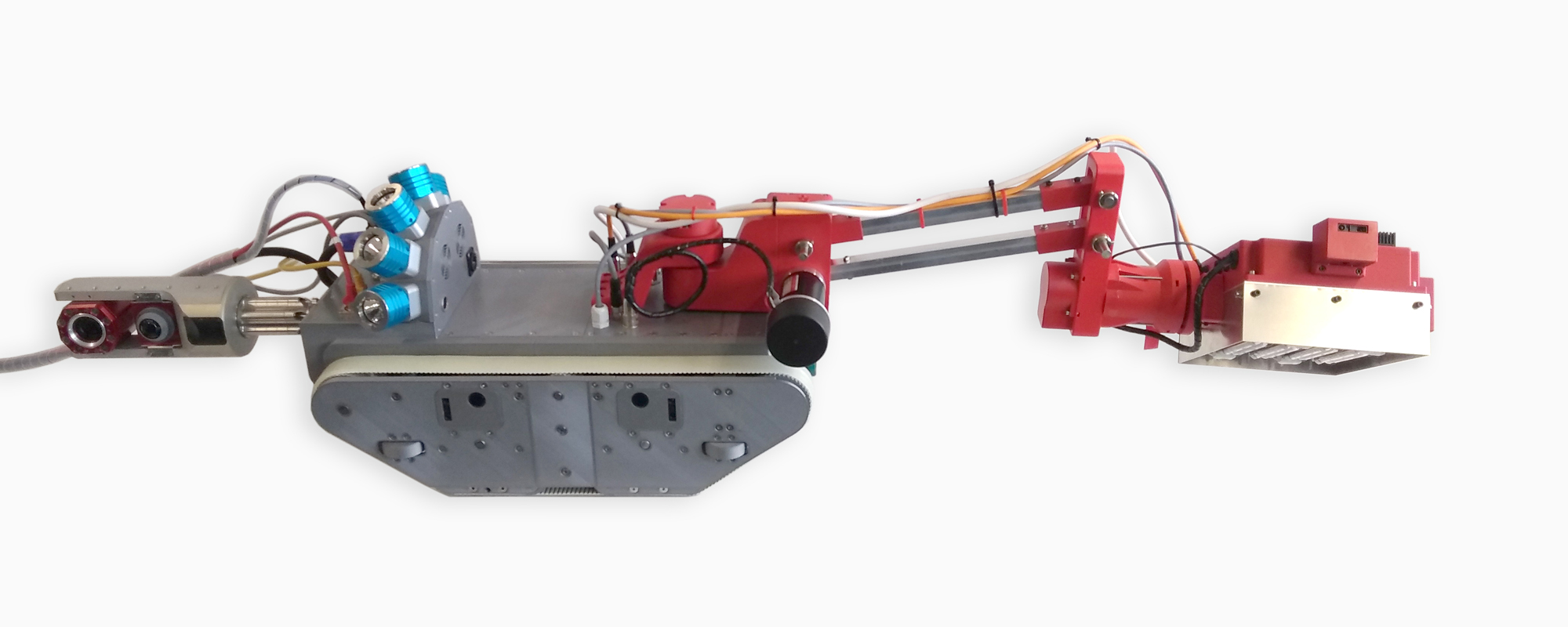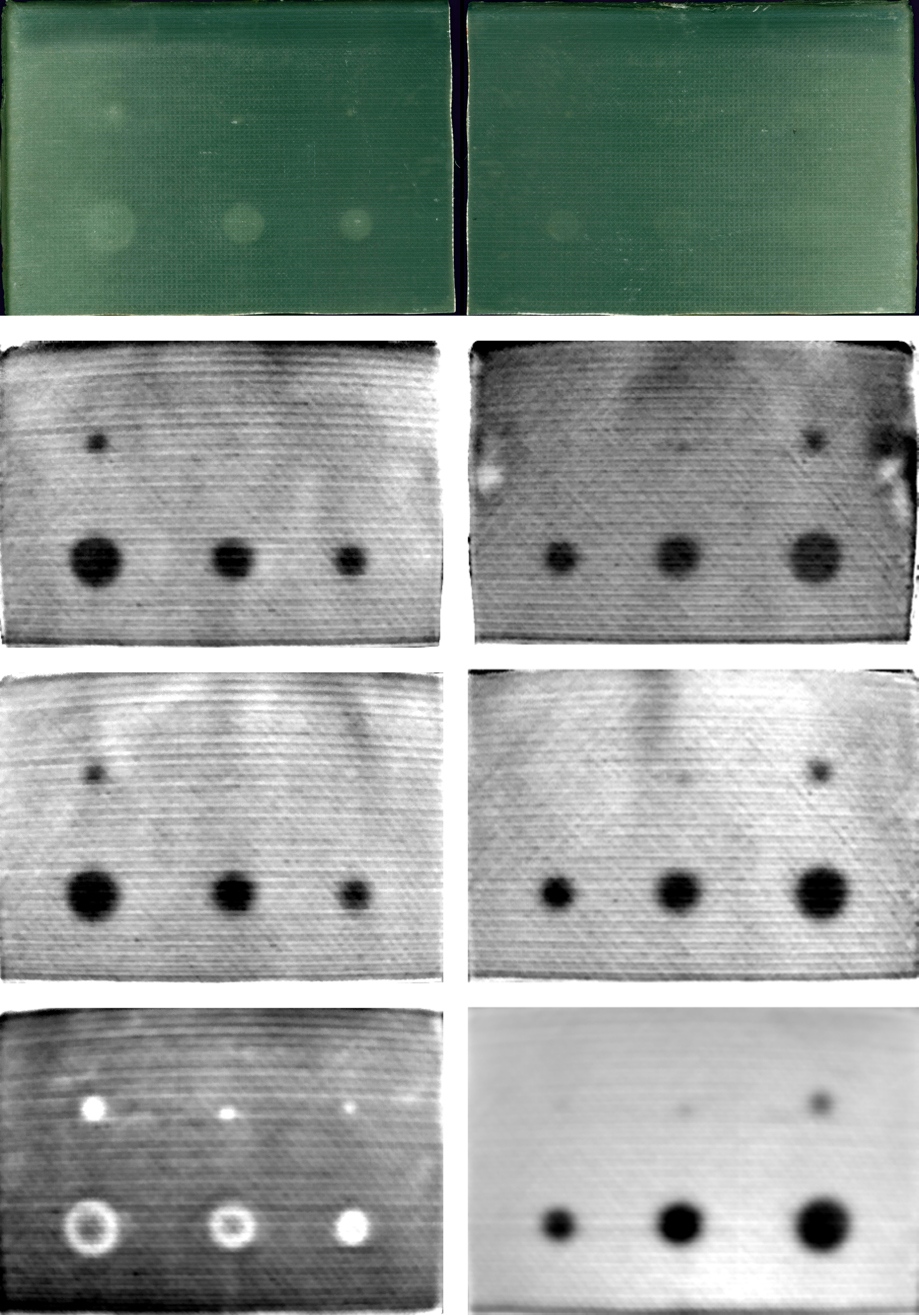Press release
New thermography robot enables internal inspection of rotor blades
In order to increase the safety and economic efficiency of wind turbines, researchers at the Fraunhofer WKI, in collaboration with project partners, have developed a thermography robot for the internal inspection of rotor blades. The Fraunhofer WKI heat-flow thermography methods are already being successfully utilized for quality control of the external surface of rotor blades. Production defects close to the surface can thereby be determined. Now, imperfections on the inside of the rotor blade can also be detected.


The rotor blades of wind turbines are generally manufactured by gluing together two half-shells, i.e. they are hollow inside. During operation, they are subjected to high mechanical loads. Material defects such as faulty bonding and cracks can have serious consequences - and can even result in the total loss of the entire turbine. They must therefore be meticulously inspected from both the inside and the outside. “Inspection from the inside was previously only possible to a limited extent, as not all blade areas are accessible and not all defects are optically visible,” said Jochen Aderhold, Project Manager at the Fraunhofer Institute for Wood Research, Wilhelm-Klauditz-Institut WKI. In collaboration with a number of research and industrial partners, Aderhold and his team therefore developed a thermography robot for interior inspection.
The rotor blades of wind turbines are developing into ever more complex components. This is due not only to the constantly increasing rotor diameters: The blade geometries are also becoming more and more complicated in order to achieve better aerodynamic properties and lower noise radiation. A huge variety of materials are used in their production, including glass and carbon fiber-reinforced plastic (GFRP/CFRP) with polyester or epoxy resins as the basis, balsa wood, foamed plastics and metal. The material mix with elements with poor heat conductivity makes it difficult to identify the underlying layers. Consequently, defects on the inside of the rotor blades can often not be detected from the outside. “We were able to master this challenge. Our thermography robot, with a penetration depth of several centimeters, can also detect defects on the inside of the rotor blades,” explained Aderhold.
The project partners at the Harz University of Applied Sciences and at the Institut für Automatisierung und Informatik GmbH (institute for automation and computer science) in Wernigerode developed a mobile robot which is inserted into the inner cavity of the rotor blade and subsequently moves along the length of the rotor blade by remote control. For this purpose, the scientists at the Fraunhofer WKI developed a suitable thermography process. With the aid of an infrared radiant heater, the rotor blade is heated during the robot movement. Damaged areas such as cracks, bonding defects or air inclusions exhibit a deviating thermal conductivity and therefore alter the heat flow and, consequently, the temperature distribution at the surface. The thermographic camera installed in the robot records these alterations in the temperature distribution and converts them into images. By means of special software, also developed at the Fraunhofer WKI, the images can be analyzed and optimized on the computer, for example with regard to contrast enhancement, noise suppression or background subtraction. The camera settings can also be adjusted via the software.
For navigation purposes and for better assessment of material defects visible on the surface, the robot also records high-resolution optical photos with a camera supplied by project partner itv gesellschaft für industrie-tv mbh. A system from the project partner a3Ds GmbH in Braunschweig measures the internal geometry of the rotor blade. The robot can be used both for rotor blades which are lying on the ground and for those which have already been attached to the tower.
“With this procedure, quality assurance can be optimally supplemented throughout the production process and during operation,” said Aderhold. Researchers at the Fraunhofer WKI, in collaboration with rotor-blade expert Otto Lutz from Bundorf, had previously already contributed towards improving quality control: through a system in which rotor blades can be examined from the outside for near-surface production defects by means of active heat-flow thermography. This enables the detection of defects which are located several centimeters below the surface and are therefore not visible from the outside. This procedure has proven itself and is already being utilized in industry.
Further application possibilities for the new procedure include tubular objects such as drainage/sewage pipes. In such cases, the thermography robot could detect damaged areas in the glass fiber-reinforced plastic cladding, which is often used to renovate old drainage pipes.
The project, which will run for just over three years, was funded by the German Federal Ministry for Economic Affairs and Energy (BMWi) via Project Management Jülich (PtJ) and managed by the Experimental Factory of the ZPVP GmbH in Magdeburg. A follow-up project is already planned. Researchers at the Fraunhofer WKI, together with project partners, thereby intend to determine how a thermographic investigation can be successfully performed without the user having to apply heat. To do so, the natural temperature difference between day and night will be utilized.
Last modified:
 Fraunhofer Institute for Wood Research
Fraunhofer Institute for Wood Research